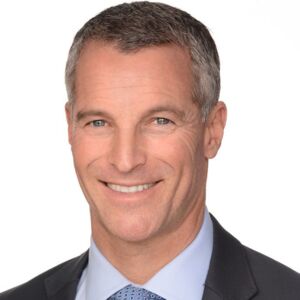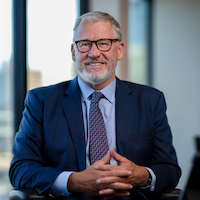Super funds to tip more into private credit
By Elizabeth Fry

Invesco Australia's head of investment strategy Ashley O'Connor says super funds are looking to lift their allocations to private debt given the uncertainty and volatility in listed markets.
Private debt - a sector that includes performing credit in senior secured loans and direct lending, as well as distressed credit - has grown as banks cut back on lending to small and medium-sized companies.
After a decade of strong growth, averaging 13.5 per cent annually, Preqin predicts private debt will grow at 17.4 per cent in the next four years propelling it to become the second biggest private capital asset class in 2023.
The data provider also suggests the sector could become as big as the private equity industry, which has about US$5 trillion in assets.
O'Connor says assets such as senior secured loans to corporates in the US and Europe are now capturing the attention they deserve, relative to the local market which offers less liquidity and diversity given that Australian credit is dominated by the banks and real estate.
"If you look to the US and European markets, they have thriving senior secured loan markets where investors have access to floating rates, more than 1000 companies, and are secured in the unlikely event of a default. This has allowed investors to diversify away from the duration risk in bonds and take on uncorrelated credit risk that complements their fixed income strategy and generates high stable monthly income," he says.
Senior secured loans are a primary source of funding for companies to finance growth and operations for below-investment-grade companies.
Floating-rate loans linked to rising borrowing costs provide a more stable return, especially in times of inflation.
Further, they offer protection since they sit at the top of a company's capital structure, being senior to all other forms of debt and equity and backed by the borrowing company's assets.
"Our investments are primarily floating rate, high income, senior secured and form part of a liquid broadly syndicated loan market worth US$1.8 trillion with consistently high trading volumes," states O'Connor.
Chasing deals
The strategist joined Invesco after ten years with Frontier as head of debt. He concedes that jumping across to a fund manager was an unusual career move.
Most asset consultants either stay where they are or join an asset owner.
He moved to the A$2 trillion global fund manager partly because he always wanted to work with Martin Franc, the former BT executive who became Invesco's chief executive.
But O'Connor was also attracted to the investment giant's A$59 billion private credit platform.
"Being one of the biggest trading counter-parties in the market is helpful as you get early looks at deals and get feedback on terms and pricing," he adds.
A record amount of pension money is also chasing direct lending deals to below investment grade corporates.
Direct lending deals provide higher floating rate returns than broadly syndicated deals as investors lock their money in debt for a longer time so it's not as easily tradable.
Says O'Connor: "Obviously, in a rising rate environment, you can get a pretty healthy premium for illiquidity in the direct lending space."
"So it's a trade-off between the return premium and the illiquidity."
Invesco specialises in the core middle market space for direct lending where there is not too much money chasing the deals. In the distressed debt area, Invesco specialises in the small to mid-cap space.
"We target higher equity-like returns in distressed debt investing by snapping up the discounted loans of troubled companies in the expectation of swapping that credit position for control of its assets in a subsequent bankruptcy," he adds.
Local super funds invest in all three debt segments - senior secured loans, direct lending and distressed debt - they are complementary and play a role.
But O'Connor believes that super fund allocations to private debt are likely to increase over the next few years from a relatively low base, which is consistent with the recent surveys and feedback seen from asset owners at industry conferences.
O'Connor also argues that scale and on the ground presence provides advantages in private debt given the importance of having deep relationships with private equity sponsors, trading counterparties, and the ability of industry specialist credit analysts to assess individual company risks.
Pension funds seek deals
Returns from senior secured loans in the large liquid end of the market are solid. Companies trading close to par typically return cash plus 4 per cent although all in yields are currently around 9 to 10 per cent due to rising rates and the potential for capital upside.
The typically less liquid direct lending is returning between 8 and 12 per cent gross with distressed returning mid to high teens on a net basis. "Here you are identifying companies in stress or distress, often before they default - still buying in senior secured loans - before taking it on a restructure to get equity upside," he notes.
Since the global financial crisis, bespoke deals in the private debt market arranged by specialist managers and private equity firms have increasingly attracted the large pension funds
"You can also have bespoke credit agreements in terms within direct lending and be quite selective in the corporates that you hold which is important if we go into recession and there is an uptick in defaults in the private credit space," says O'Connor.
He concedes that buying private debt in this environment can be a tough call.
The big end of town has attracted a lot of investor capital and raised multi-billion investor funds, but employing that capital has proved challenging.
"There is a lot of competition at the large end of the distressed credit space where managers have raised large-sized funds. But there are only so many deals, and they are reliant on a default cycle to allocate and invest that capital," he says.
Conversely, O'Connor argues there are continuous opportunities in the small to middle market space since there are always companies getting into some form of distress.
"So you are not reliant on a default cycle," he says.
"More likely, there will be specific companies that struggle to withstand the rising interest costs and negative impacts on EBITDA when recession risk eventuates so that means being selective and identifying the best opportunities."
"Likewise, there are parts of the direct lending space that are a bit crowded, but in the core middle market space, we have been able to find opportunities.
"It just comes down to the segment you are playing in."
Capitalising on opportunity
The strategist says the mountain of dry powder waiting to be invested in private equity, coupled with asset owners' strategy globally to buy credit, provides ample opportunity for considered private credit investors.
Nevertheless, he thinks loans to core mid-market firms are particularly attractive.
"Our observation on direct lending is that the dry powder for private equity is at all-time highs, but the dry powder for direct lending is not. This means there are plenty of opportunities out there, particularly in the core middle market direct lending space where we operate."



